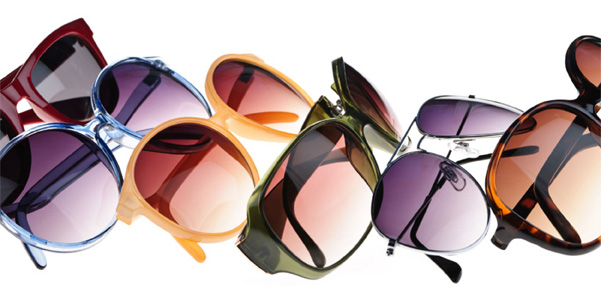By Brian P. Dunleavy
To paraphrase a certain well-known frog puppet, It’s not easy being… well, gray or brown.
Indeed, although there is little doubt about the performance of prescription polarized sunlenses in reducing glare and protecting the eyes from the sun’s harmful ultraviolet (UV) rays, a high percentage of Rx eyeglass wearers have gravitated toward other sunlens options – such as specialty tints – because of the lack of colour options available in polarized. Historically, the technology has only been available in gray or brown.
“I’ve had a lot of clients move away from polarized lenses because they don’t want gray or brown lenses,” notes Bruce Tobin, optician and owner of Optical Excellence in Ottawa. Still, Tobin says, more than 60 per cent of the prescription sunlenses he sells are polarized. “Once you explain the benefits,” he continues, “patients will realize, ‘That’s the lens for me,’ just for the glare reduction in all seasons. I’ve even found that clients who have had difficulty wearing sunlenses in the past – because they are too dark – like them. Once you add anti-reflective (AR) coating to a polarized lens, it’s like you’re not wearing sunlenses at all.”
Now, the sales pitch should get even easier.
In recent years, lens manufacturers have worked to enhance polarized technology, improving the performance of polarized filters (to block more reflected glare) and making the lenses more durable (scratching, peeling or chipping were issues with the products of the distant past). And finally – and perhaps most importantly for optical shops with fashion-conscious Rx sunlens wearers – they have also begun to make the technology available in an expanded colour palette, including mirror-coated, rose and gray/green, as well as lenses that combine photochromic and polarized technologies and change shades in response to light. More new colours are reportedly in development.
All of these changes mean that the core market for polarized sunlenses has expanded to include not only outdoor sports – particularly water sport – enthusiasts who have traditionally embraced the technology, but also golfers and cyclists as well as those who spend a lot of time driving during the day (for work or leisure). In addition, as Tobin notes, polarized lenses (with AR coating) are also an excellent option for patients who have had difficulty wearing prescription sunlenses in the past or who are light sensitive as a result of light exposure or cataract surgery.
Opticians such as Trina Mendria, owner of ArtSEE Eyewear in Victoria, B.C., who says that polarized lenses already account for 80 per cent of the Rx products she dispenses (including custom clip-ons), hope to see the potential wearer population expand further as manufacturers add to the lens designs and materials available with the technology. The selection of progressive lenses with polarized filters is limited, she notes, particularly among specialty sunlens manufacturers.
“They may have a polarized lens in a progressive design you don’t use, or in a design the patient isn’t used to wearing,” she explains. “In some cases, the available design can be a huge departure from what the patient wears [in their clear lenses].”
According to Mendria, manufacturers will eventually have to address how digital displays are viewed through polarized filters. Some digital displays use light that polarized lenses are designed to filter, making them difficult for wearers to read. As digital displays and LCD screens are almost ubiquitous and are now often found on the dashboards and control panels of vehicles, this has become a major issue.
“I’ve even had boaters come back and return their polarized lenses,” Mendria notes, referring to what has been a key market demographic for the product. “It’s a new development and it has been challenging, but it’s really the only drawback with polarized lenses. Once people see the difference – and we have a display that shows them – they see the benefits.”








